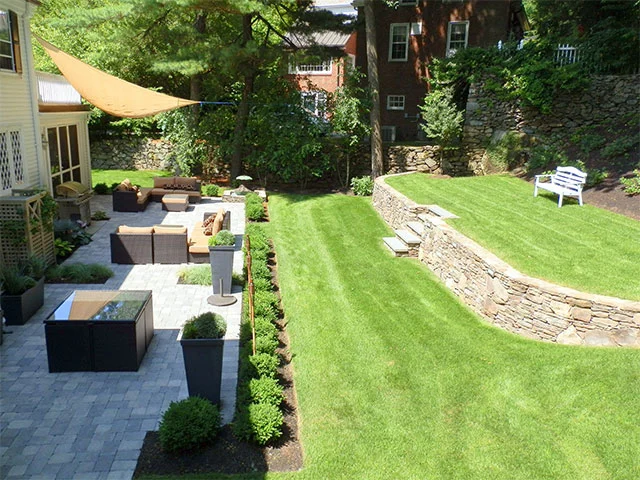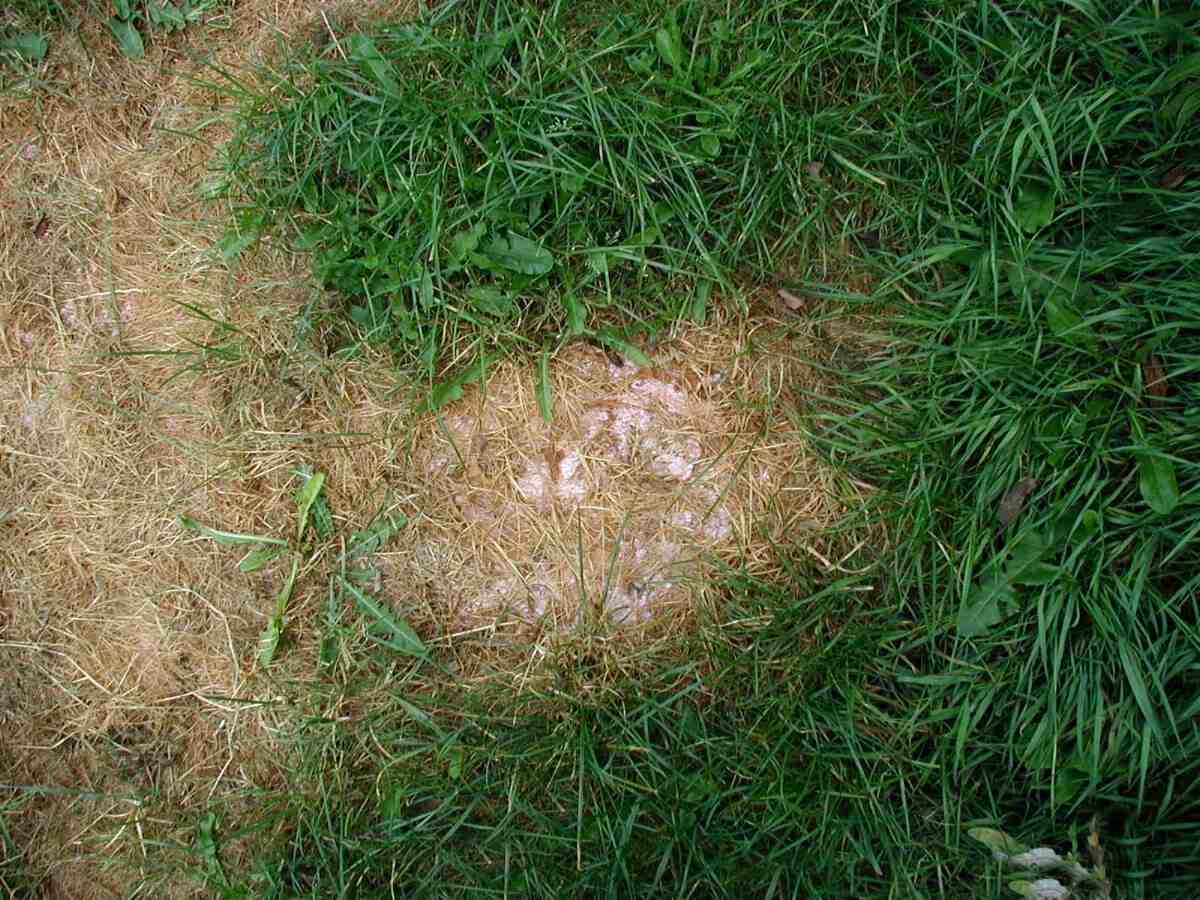What Is the Best Time to Top Dress a Lawn?
Last Updated on June 29, 2025 by Duncan
Topdressing could be the answer if your grass is weed- and disease-ridden or simply looks a touch drab. Your struggling lawn can become a show-stopper with this easy lawn care method.
Topdressing involves applying a thin layer (¼-inch) of organic material on top of your grass to amend the soil. You can topdress your entire yard or concentrate on barren areas and use overseeding to fill them in.
Topdressing is the best approach to revitalizing your lawn without having to rip up all of the grass (which is inconvenient) and starting over. As your grass grows through the topdressing layer, the organic material is absorbed into the soil beneath it, increasing nutrition levels and quality.
What is the best time to topdress a lawn?
You should top dress your grass in the early fall after some maintenance, such as scarification and aeration.
Scarification eliminates trash from the lawn (known as ‘thatch’), while aeration generates small holes that allow air circulation and drainage.
You can complete these treatments manually or with machinery, depending on your budget and lawn size.
Top dressing your lawn in the fall following the stress that many lawns would have had over the summer, such as increased traffic and possibly drought, will not only help the grass recover but will also prepare it for the winter ahead.
Furthermore, throughout the fall season, the soil will remain warm and damp, providing ideal circumstances for any fresh grass seed to thrive.
You can also do top dressing in the spring, although the soil is normally significantly cooler for germination at this time, and the risk of frost is higher.
To be on the safe side, do top dressing when the grass is actively growing. While this is the case, you should avoid top dressing if your grass has been seriously damaged by hot, dry summer weather.
When top treating your grass, exercise caution, especially if you are unsure of how to do so. This is because top dressing can smother your lawn or impede expected results if the grass is not in a rapid-growing phase.
What materials should you use for top dressing?
One of the first and most critical tasks is determining what type of topdressing material to use. To be functional and useful, the material you settle on must have a texture similar to the underlying soil.
You should note that using the improper material as a topper soil can cause major problems, so be ultra-cautious.
The use of topdressing mixes containing textures drastically different from the underlying soil results in the development of a distinct layer that impairs air and water movement considerably and results in an overall reduction of turfgrass quality.
Use a soil combination with a similar texture and composition to the underlying soil. The most common lawn topdressing ingredients that you can use include sand, topsoil identical to your existing soil type, high-quality compost, or a custom-blended combination.
Sand: Most people use sand on golf courses, particularly on man-made greens. You can also apply it on heavy clay soils to promote drainage.
Even if this is the case, avoid putting fine topdressing sand on coarsely textured soil. The optimum sand for topdressing your lawn is a 70/30 mix of sand and topdressing soil.
Topsoil similar to original soil: Adding topsoil comparable to the current soil structure is OK and will help smooth the ground, but it contains little organic material. The ideal lawn topsoil for you will be determined by your soil’s original qualities.
Topsoil for grass is made up of clay, sand, decomposed plant matter, and other soil components.
Compost is the most common material to use, provided it is completed and has minimal fillers.
Topdressing lawns with compost enriches the soil, and you can even manufacture your compost at home.
Topdressing mix: Homeowners frequently combine the components listed above to create a cost-effective blend that is comparable to their existing soil. A combination of compost and topsoil/sand is typically recommended.
If you need lawn topsoil or sand, visit your local nursery, garden center, or landscape or construction company.
How to top dress a lawn
For you to effectively topdress your lawn, you need to follow these steps:
Get rid of thatch
Use a power rake or core aerator to break up the thatch layer, allowing the topdressing material to enter the surface.
Thatch is the interwoven layer of living and dead elements found between grass blades and soil. It can prevent topdressing materials (along with water and other nutrients) from reaching the soil.
Clear away the debris.
Remove any grass clippings, loosened thatch, or soil plugs (after lawn aeration) from the area you plan to topdress.
Pull out the lawn mower.
Mow the grass as low as possible within the recommended height range.
Overseed the lawn.
If you are overseeding, spread grass seed. This is an excellent opportunity to produce fresh grass because the top dressing will help in seed germination.
Spread the top dressing.
Shovel a small amount of topdressing material across a few square feet at a time. To distribute the material in a ¼-inch layer, use a motion similar to hitting a hockey puck.
If the compost is dry and screened, you can apply it with a fertilizer or peat moss spreader. Screened compost is filtered to remove big particles.
Rake and water the top dressing into the grass.
After spreading the organic material, gently rake it in, then thoroughly water your grass to transfer the material to the soil surface.
Leave your grass alone.
Avoid excessive foot traffic on your grass over the next week, and then wait 7-10 days before mowing again.
Wait for the topdressing results.
Watch and wait. It may take several seasons to reap the full benefits of topdressing, but you should be able to notice improvements in drainage and water retention within a few weeks.
Top dressing tips
You can do topdressing on your own, but it is a time-consuming process. Some home improvement stores rent out motorized spreader equipment, which minimizes labor but increases costs.
Don’t be too aggressive: Topdressing regularly enhances both thatch breakdown and soil quality. However, it improves the gradient of your yard. To avoid raising it too much, don’t topdress too aggressively. Treat bare places as needed and the whole lawn every few years.
Topdress the lawn more often: You can do a light topdressing treatment if the amount added is shallow enough to brush into core aeration holes.
Consider your grass type: The optimal time to topdress a lawn is determined by the type of grass you have. Topdress lawns in the spring for warm-season grasses and fall for cool-season grasses. This enables for three or four mows before extreme heat or cold sets in.
Combine with other lawn-care practices: To prevent soil compaction, combine topdressing with aeration, as well as overseeding to promote fresh grass growth. Keep in mind that the ideal top dressing for grass seed germination is nutrient-dense and peat-free.
If topdressing your lawn sounds like too big a chore for you, some lawn care firms provide topdressing services to their clients.
It is becoming a more popular service due to demand, but it is still not generally available; it needs a significant amount of work with a low-profit margin for businesses.
FAQ about topdressing.
Should you fertilize before topdressing?
It is optional, but you can fertilize before topdressing a grass. If you opt to aerate, apply the fertilizer after aerating but before applying the topdressing material. This extra fertilizer boost will help the turf grow and thrive.
Do you water your lawn after topdressing?
Water your grass after topdressing to help improve the ground. Plants and grass might become agitated while experiencing a new change, and giving water thereafter aids in the adjustment.
When can I mow after top dressing?
Do not mow immediately after topdressing. It is wise to let the lawn sit for a week to ten days before trimming it.
What’s the difference between dirt and soil?
Dirt differs from soil in that it lacks the living matter, creatures, humus, fungus, and nutrients that soil contains. Dirt is composed of silt, clay, and sand. Dirt is a mineral-rich soil component that lacks living organic life.
If your soil is depleted, resulting in a dirt lawn rather than healthy grass, you can enhance sandy soil and other unbalanced soils with soil supplements such as compost or mulch.


